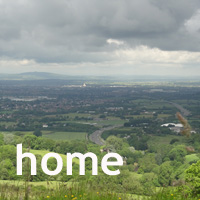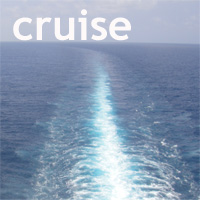Another nice hat!
 Tuesday, February 11, 2014 at 8:26PM
Tuesday, February 11, 2014 at 8:26PM
Well, he really wanted to show me how he carved into this enormous gourd, but I’m afraid I was more interested in his beautifully knitted hat!
We worked our way down this street, stopping and chatting, making one or two small purchase but mostly, just soaking up the atmosphere.
Before we knew it, we were in a wide open plaza in front of the church where a few women were setting out their goods for sale and others simply sat and chatted. No-one “just” sat though, because everyone had in their hands a needle and thread, a small piece of braiding, crochet, spinning or knitting.
All around were little vignettes of life here in Chinchero. These people were only going about their daily business in the same way as always, but to us it was incredibly picturesque.
Making our way over to the church, we passed several of the ladies with their blue tarpaulins and of course, we couldn’t resist looking at what they had to offer. My hero pointed out a pink and green bag he thought I’d like.
I did…I do, and I’ll enjoy using it!
So many beautiful things out there in the natural light, where they looked simply stunning.
For once though, my eye was drawn away from the textiles. Here was another “mamatia” as Adriana called them, a lady sitting spinning at the foot of what looked remarkably like an English war memorial (but I don’t think it was anything of the kind!)
Would she mind if I took her picture? Not at all!
But then, out of the blue came someone else and sat down beside her. There’s cheeky!
Hello – or rather, Hola, I said and pointed to my camera. A nod and a pose followed.
She too was carrying a heavy pack and began to open it up, maybe to find her lunch. Adriana asked her age and after a great deal of thought, she said 80. But she was none too sure.
She grinned as we talked about her – how much did she understand? We admired her shawl however, her fine hat and talked about the weight of her backpack.
The other lade continued with her work, not at all worried about being upstaged.
Our final stop was the church. This one is a hybrid of Catholic and Quescha and inside there are signs of both. Adriana told us it was where she loved to come on a Sunday with her family, when the only sitting room would be on the floor and that the local people would be dressed in their Sunday best to sing and pray with huge enthusiasm.
We were happy to stand and stare; at the beautifully decorated interior with not one square inch left unadorned, at the inca earthworks on all of the hills around us and yes, of course, at the two old ducks still sitting there.
But it was time to leave this peaceful place and make our way back to Urubamba.
We walked back to the car passing more of these weavers and lovng the huge baskets of flowers everywhere.
We ducked under a branch of Peru’s national flower, the name of which I’ve forgotten, sorry!
and stopped to buy some sweets from this gentleman in the street, who was busy with a bit of fingerbraiding.
Look who was waiting by our car!
We greeted her politely and asked how she was. Not so bad, she said, but she was having trouble with her eyes and so found it difficult to see things
She didn’t know how old she was.
But needless to say her bundle was there beside her on the pavement,
We drove back through this large flat upland landscape where, believe it or not, an international airport is proposed. All around us are traces of the incas, their terraced hillsides and agave lined trails, still visible and in regular use.
It might bring prosperity to a few local farmers, may well make getting to Machu Picchu rather easier, but at what cost?
We drove on through potato fields and expansive countryside for a while before we recognised a couple of now familiar features in the landscape.
The horizontal line over on the far hillside, which is an inca waterway – one of those channels directing water from the top of the hill to a place of habitation.
And then the viewpoint over Urubamba, where we stopped to take a few pictures.
What a day! And how pleased we are to bring home a piece of work created by those ladies, with the braided edge. We’ll find somewhere to hang it at home and each time we see it, we’ll think of the women of Chinchero and their incredible textile skills.
 Peru in
Peru in  craft,
craft,  fun,
fun,  textiles,
textiles,  travelling
travelling 







